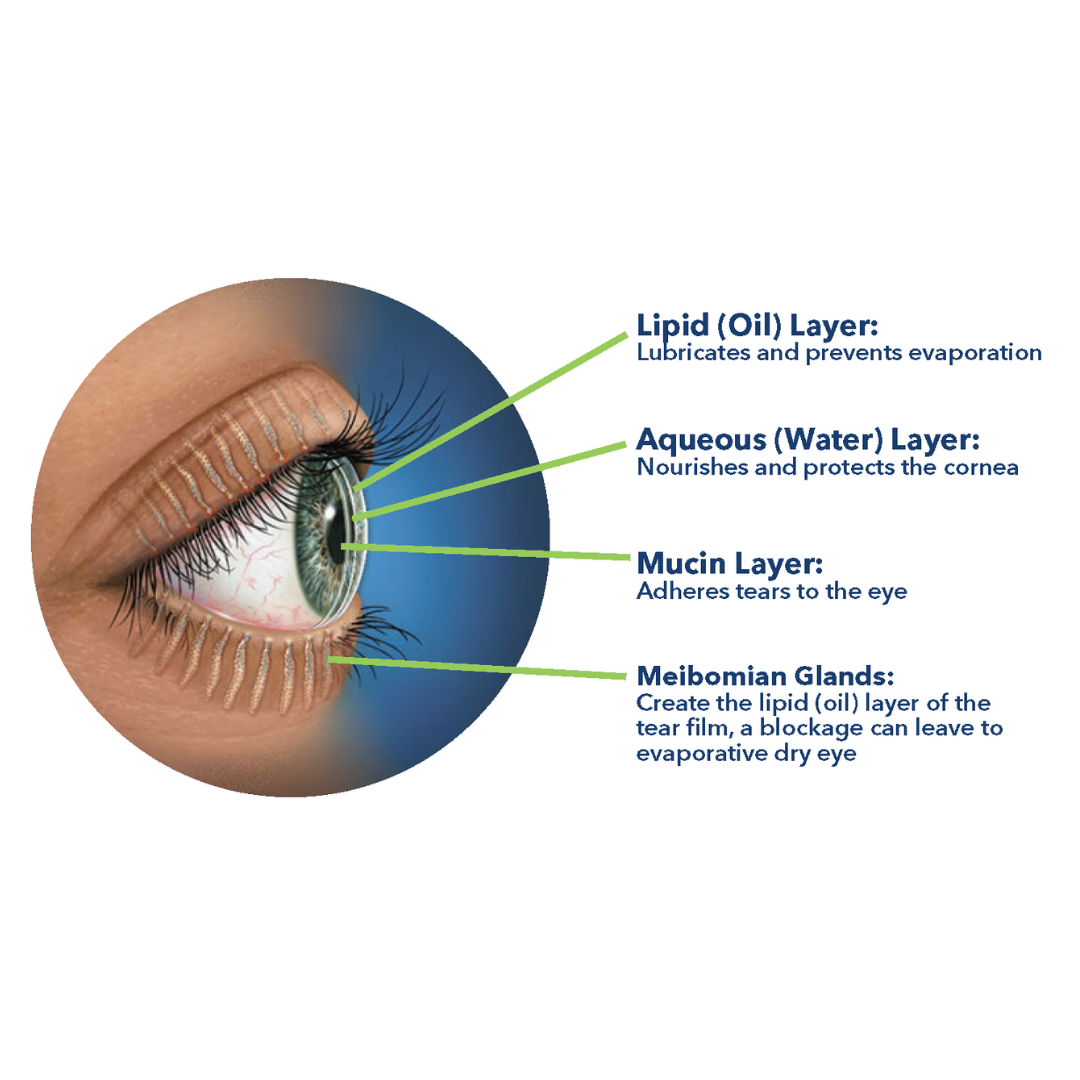Oil duct in eye clogged. Understanding Meibomian Gland Dysfunction: Causes, Symptoms, and Treatment Options
What are the main causes of Meibomian Gland Dysfunction. How does MGD affect eye health and vision. What are the most effective treatments for unclogging meibomian glands. How can you prevent MGD and maintain healthy eyes.
The Crucial Role of Meibomian Glands in Eye Health
Meibomian glands play a vital role in maintaining the health and comfort of our eyes. These tiny glands, located in our eyelids, produce an oily substance called meibum. This oil forms an essential component of our tear film, which consists of three layers: oil (lipid), water, and mucus.
The meibum serves a critical function by preventing the rapid evaporation of the watery layer of tears. Without this protective oil layer, our eyes would become dry and irritated much more quickly. When meibomian glands fail to function properly, it can lead to a condition known as Meibomian Gland Dysfunction (MGD).
Meibomian Gland Dysfunction: A Common Culprit Behind Dry Eyes
Meibomian Gland Dysfunction (MGD) is a prevalent eye condition that occurs when the meibomian glands become clogged or don’t produce enough oil. This dysfunction can significantly impact the quality and stability of the tear film, leading to various uncomfortable symptoms.

MGD is often associated with dry eye syndrome, as both conditions share similar symptoms and can exacerbate each other. Understanding the causes, symptoms, and available treatments for MGD is crucial for maintaining optimal eye health and comfort.
Common Causes of Meibomian Gland Dysfunction
- Aging: Studies show that 59% of adults with an average age of 63 had at least one sign of MGD
- Underlying conditions such as dry eye or blepharitis
- Prolonged contact lens wear
- Frequent use of eye makeup
- Hormonal changes
- Certain medications
- Environmental factors (e.g., low humidity, air conditioning)
Recognizing the Symptoms of MGD
Identifying the symptoms of Meibomian Gland Dysfunction is crucial for early intervention and treatment. Many people may not realize they have MGD, as the symptoms can be similar to other eye conditions. Here are some common signs to watch out for:
- Itching or burning sensation in the eyes
- Increased sensitivity to light (photophobia)
- Redness and watering of the eyes
- Feeling of a foreign body or grittiness in the eyes
- Blurry vision, especially after prolonged screen time
- Difficulty wearing contact lenses comfortably
- Stringy mucus in or around the eyes
- Eye fatigue, particularly at the end of the day
Can MGD symptoms worsen over time. Yes, if left untreated, MGD symptoms can progressively worsen, leading to chronic dry eye and potential damage to the ocular surface. This highlights the importance of seeking professional help if you experience persistent eye discomfort.

Diagnosing Meibomian Gland Dysfunction: What to Expect
Proper diagnosis of MGD is essential for effective treatment. Optometrists and ophthalmologists use various techniques to assess the health of your meibomian glands and overall eye condition. Here’s what you can expect during a diagnostic examination:
- Visual inspection: Your eye doctor will examine your eyelids and the openings of the meibomian glands.
- Meibomian gland expression: Gentle pressure is applied to the eyelids to evaluate the quality and quantity of the meibum.
- Tear film assessment: The stability and composition of your tear film will be evaluated.
- Tear Breakup Time (TBUT) test: This test measures how quickly your tears evaporate, using a special dye and light to make your tears visible.
- Meibography: An imaging technique that allows visualization of the structure of the meibomian glands.
How accurate are these diagnostic methods. While no single test is 100% definitive, combining multiple diagnostic techniques provides a comprehensive assessment of meibomian gland function and overall ocular health. This multi-faceted approach helps eye care professionals make accurate diagnoses and develop tailored treatment plans.

Effective Treatments for Unclogging Meibomian Glands
Once diagnosed, there are several treatment options available to manage MGD and alleviate its symptoms. The choice of treatment depends on the severity of the condition and individual patient factors. Here are some effective approaches:
Home Remedies and Lifestyle Changes
- Warm compresses: Apply a warm compress to your eyelids for 4-5 minutes daily to help melt and unclog the meibum.
- Eyelid massage: Gently massage your eyelids to express the oil from the glands.
- Eyelid hygiene: Use diluted baby shampoo or specialized eyelid cleansers to keep your eyelids clean.
- Omega-3 supplements: These may help improve the quality of meibum.
- Hydration: Drink plenty of water to support overall eye health.
- Regular breaks from screen time: Follow the 20-20-20 rule (every 20 minutes, look at something 20 feet away for 20 seconds).
Medical Treatments
For more severe cases of MGD, your eye doctor may recommend:
- Prescription eye drops: These may include anti-inflammatory drops or antibiotics to manage associated conditions.
- Oral medications: In some cases, oral antibiotics like doxycycline may be prescribed.
- Intense Pulsed Light (IPL) therapy: This non-invasive treatment uses pulses of light to reduce inflammation and improve meibomian gland function.
- LipiFlow: A thermal pulsation system that applies heat and pressure to the eyelids to express clogged meibomian glands.
- Meibomian gland probing: A procedure to physically open and clear obstructed gland openings.
How long does it take to see improvements with MGD treatments. The timeline for improvement can vary depending on the severity of the condition and the chosen treatment. Some patients may experience relief within a few days of starting treatment, while others may require several weeks or months of consistent therapy to see significant improvements.
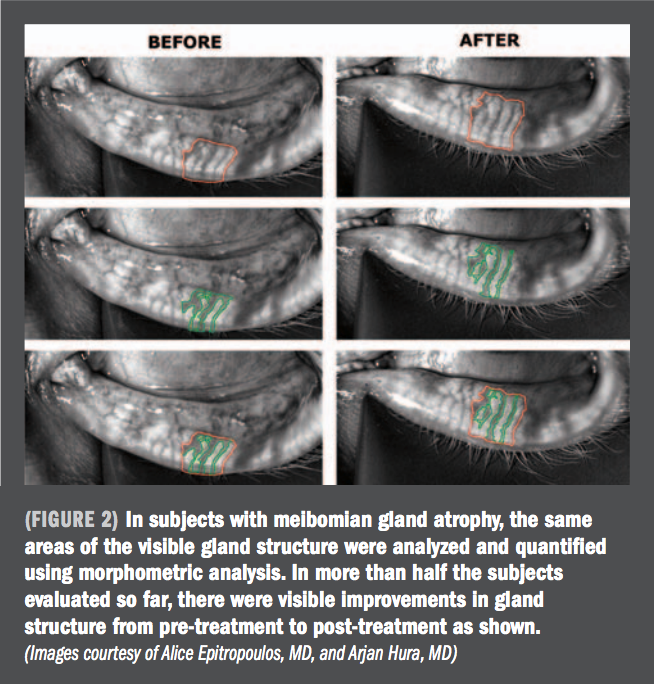
Prevention Strategies: Maintaining Healthy Meibomian Glands
While some risk factors for MGD, such as aging, cannot be controlled, there are several steps you can take to maintain healthy meibomian glands and reduce your risk of developing MGD:
- Practice good eyelid hygiene: Clean your eyelids daily, especially if you wear makeup.
- Use proper contact lens hygiene: Follow your eye doctor’s recommendations for contact lens care and wear.
- Protect your eyes from harsh environments: Wear sunglasses to shield your eyes from wind and dust.
- Manage underlying conditions: Treat any skin conditions or allergies that may affect your eyelids.
- Stay hydrated: Drink plenty of water throughout the day.
- Eat a balanced diet: Include foods rich in omega-3 fatty acids and vitamins A and D.
- Take regular breaks during screen time: Implement the 20-20-20 rule to reduce eye strain.
- Use a humidifier: Especially in dry environments or during winter months.
Is it possible to reverse MGD once it develops. While complete reversal may not always be possible, early intervention and consistent management can significantly improve symptoms and prevent progression of the condition. Regular check-ups with your eye care professional can help catch and address MGD in its early stages.
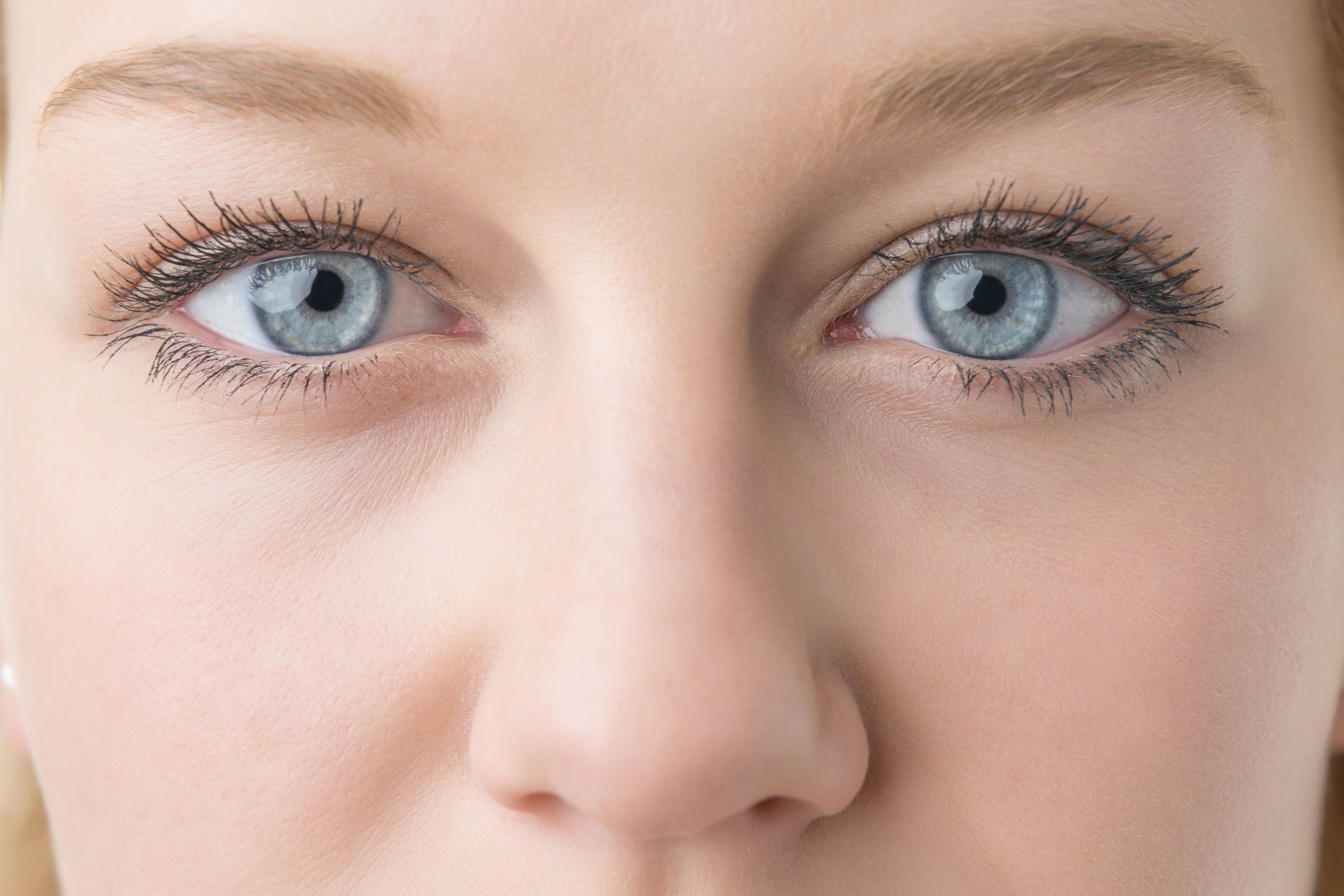
The Impact of MGD on Quality of Life
Meibomian Gland Dysfunction can have a significant impact on an individual’s quality of life. The persistent discomfort and visual disturbances associated with MGD can affect various aspects of daily living:
- Work performance: Difficulty focusing on computer screens or reading for extended periods.
- Driving: Increased light sensitivity and blurred vision can make nighttime driving challenging.
- Social interactions: Constant eye discomfort can lead to irritability and affect social engagements.
- Sleep quality: Eye discomfort may interfere with getting restful sleep.
- Recreational activities: Participation in outdoor activities or sports may be limited due to eye sensitivity.
- Overall well-being: Chronic eye discomfort can lead to increased stress and decreased overall quality of life.
How can individuals cope with the psychological impact of chronic MGD. Coping strategies may include joining support groups, practicing stress-reduction techniques, and maintaining open communication with your eye care provider about your symptoms and concerns. It’s important to remember that effective management of MGD can significantly improve quality of life over time.
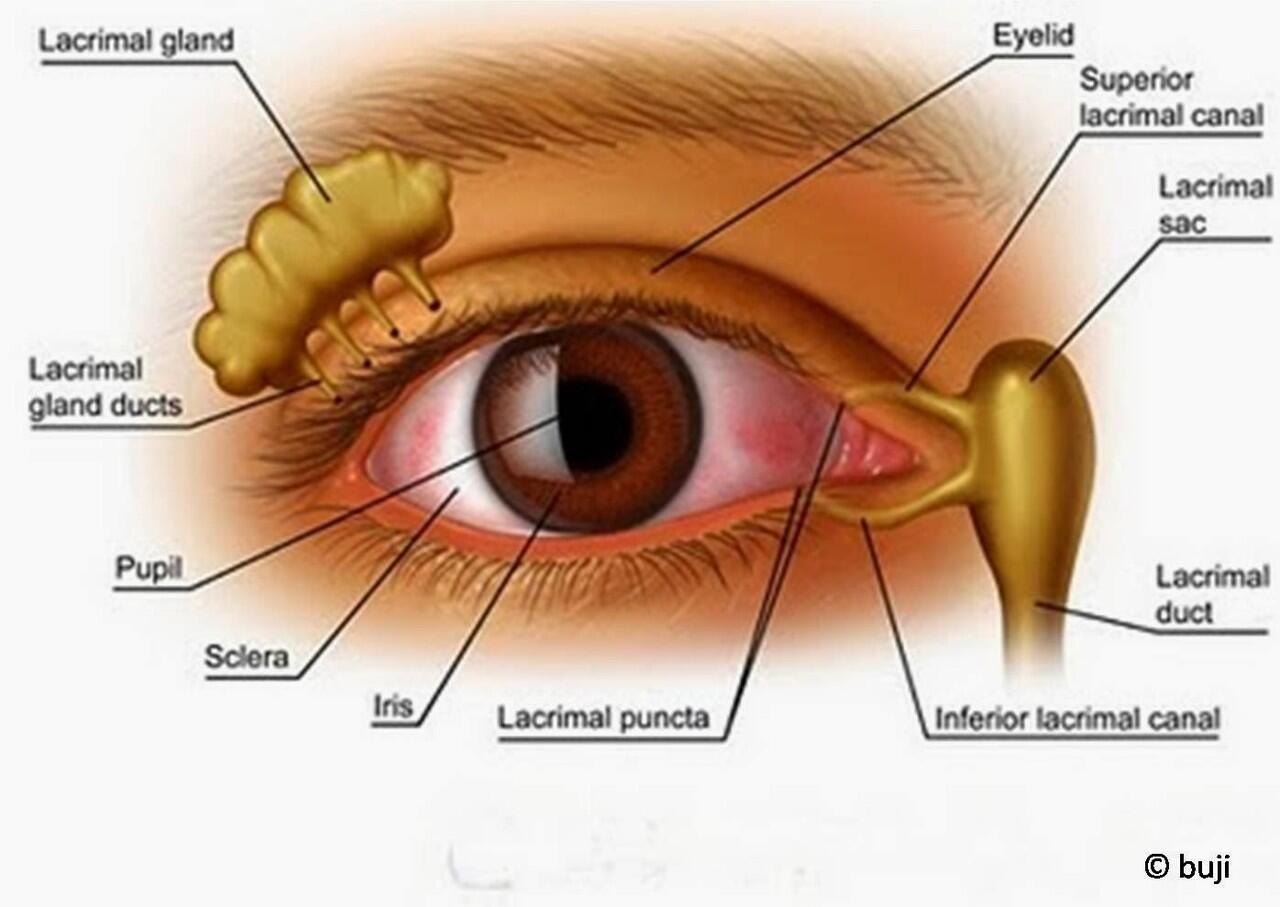
The Future of MGD Treatment: Emerging Technologies and Research
As our understanding of Meibomian Gland Dysfunction continues to evolve, researchers and medical professionals are exploring new technologies and treatment approaches to better manage this condition. Some promising areas of development include:
- Advanced imaging techniques: Improved meibography and tear film analysis for more accurate diagnosis.
- Nanotechnology: Developing targeted drug delivery systems for more effective treatments.
- Gene therapy: Exploring genetic factors that contribute to MGD and potential gene-based treatments.
- Artificial intelligence: Using AI algorithms to analyze eye images and assist in early detection of MGD.
- Stem cell therapy: Investigating the potential of stem cells to regenerate damaged meibomian glands.
- Novel drug formulations: Developing new eye drops and ointments specifically designed to target MGD.
What role does patient feedback play in the development of new MGD treatments. Patient feedback is crucial in the development and refinement of new treatments. Clinical trials often incorporate patient-reported outcomes to assess the effectiveness and tolerability of new therapies. This feedback helps researchers and pharmaceutical companies tailor treatments to better meet the needs of individuals suffering from MGD.

The Importance of Ongoing Research
Continued research into Meibomian Gland Dysfunction is essential for several reasons:
- Improving diagnostic accuracy: Developing more sensitive and specific diagnostic tools.
- Enhancing treatment efficacy: Finding more targeted and effective treatments with fewer side effects.
- Understanding risk factors: Identifying additional risk factors to improve prevention strategies.
- Exploring comorbidities: Investigating the relationship between MGD and other health conditions.
- Personalizing treatment: Developing individualized treatment plans based on specific patient characteristics.
How can individuals contribute to MGD research. Participating in clinical trials, providing detailed feedback to eye care professionals, and supporting organizations dedicated to eye health research are all valuable ways to contribute to the advancement of MGD understanding and treatment.
When to Seek Professional Help for Eye Discomfort
While occasional eye discomfort is common, persistent symptoms may indicate an underlying condition like Meibomian Gland Dysfunction. It’s important to know when to consult an eye care professional. Consider seeking help if you experience:
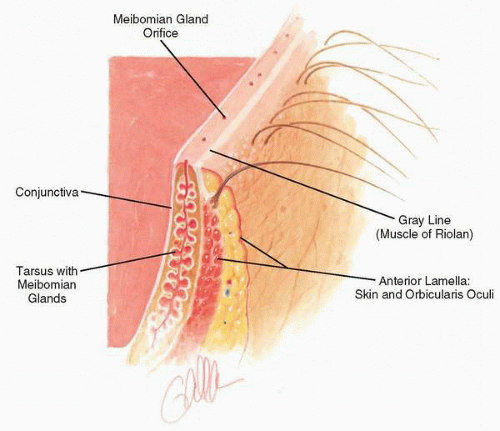
- Persistent eye dryness, grittiness, or irritation lasting more than a few days
- Recurrent eye infections or styes
- Difficulty wearing contact lenses comfortably
- Blurred vision that doesn’t improve with blinking
- Increased sensitivity to light
- Eye redness that doesn’t resolve with over-the-counter eye drops
- Changes in the appearance of your eyelids (e.g., swelling, redness)
- Eye discomfort that interferes with daily activities or sleep
How often should individuals have their eyes checked for MGD. Even if you’re not experiencing symptoms, regular eye exams are crucial for maintaining ocular health. Adults should have comprehensive eye exams at least every two years, or more frequently if recommended by their eye care professional. Those with risk factors for MGD or a history of eye problems may need more frequent check-ups.
Choosing the Right Eye Care Professional
When seeking help for potential MGD or other eye concerns, it’s important to choose the right eye care professional. Consider the following factors:
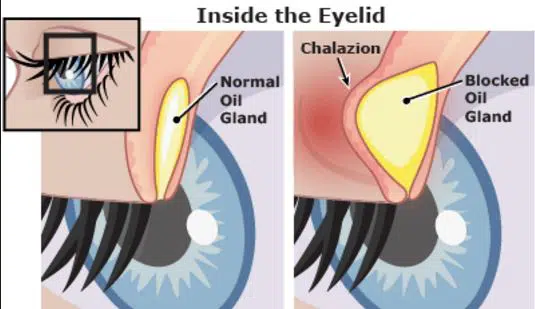
- Qualifications: Look for licensed optometrists or ophthalmologists with experience in treating dry eye and MGD.
- Specialization: Some eye care professionals specialize in ocular surface diseases and may have more expertise in treating MGD.
- Technology: Choose a practice that uses advanced diagnostic tools for assessing meibomian gland function.
- Patient reviews: Read reviews from other patients to gauge the quality of care provided.
- Insurance coverage: Check if the provider accepts your insurance to manage treatment costs.
What questions should you ask during your first appointment for suspected MGD. Prepare a list of questions, including:
– What tests will be performed to diagnose MGD?
– What treatment options are available, and which do you recommend for my case?
– How long should I expect to see improvements?
– Are there any lifestyle changes I should make to support my treatment?
– What are the potential side effects of the recommended treatments?
– How often should I schedule follow-up appointments?
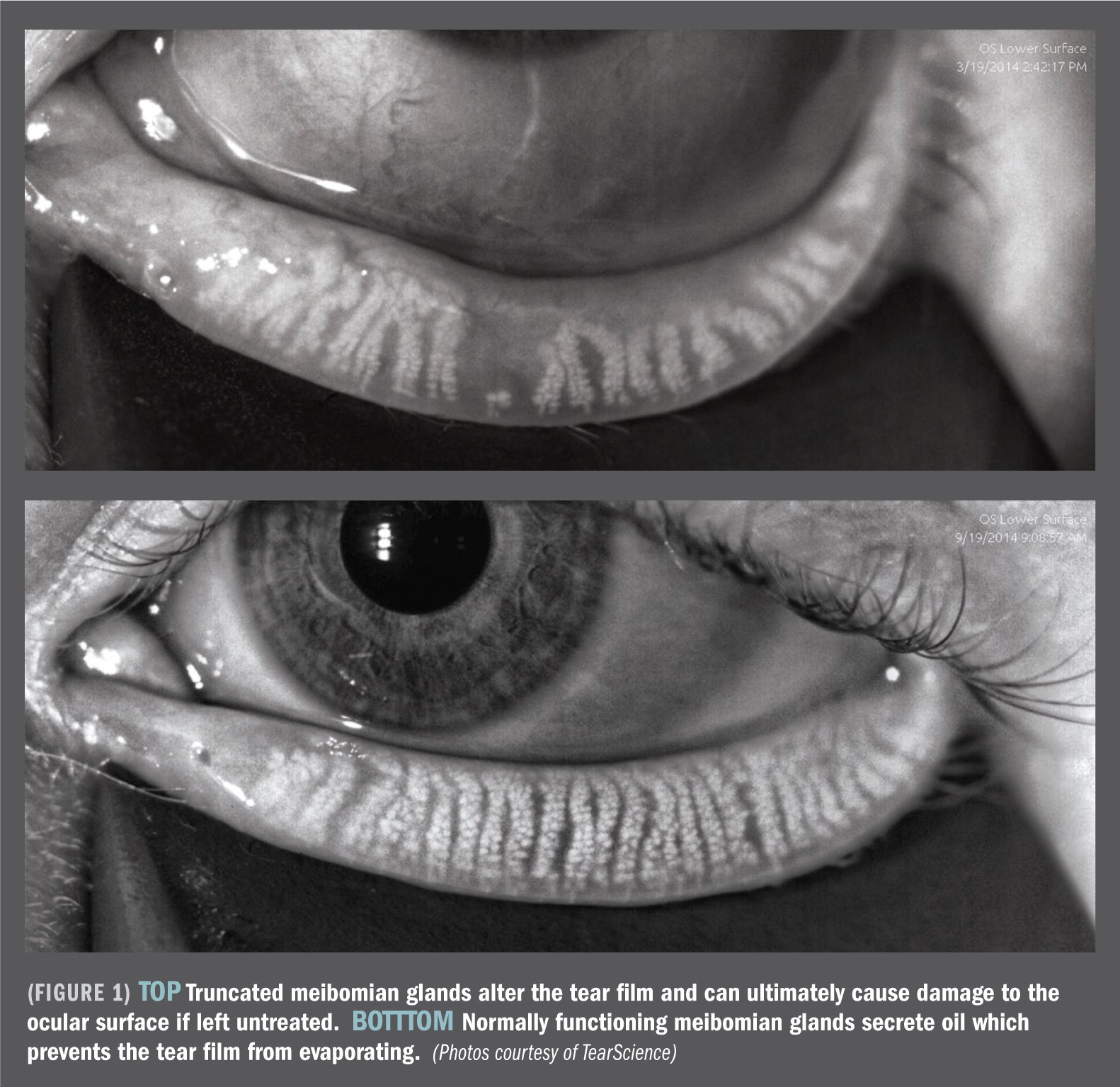
How To Unclog Meibomian Glands?
Clogged meibomian glands can occur for a number of reasons, resulting in dry, irritated eyes. When your eyes can’t produce enough adequate tears, your eyes can feel incredibly uncomfortable.
Your meibomian glands are responsible for producing a special oil that prevents your eyes from dehydrating too quickly. When these glands are affected, your eyes are the ones that suffer most.
The best way to address discomfort caused by dry eye symptoms is to visit your optometrist.
How Do Meibomian Glands Become Clogged?
Meibomian gland dysfunction (MGD) is a common eye condition that affects the tiny glands in your eyelids that produce the oil layer of your tears. This oil is called “meibum” and forms one of the 3 layers of your tear film.
Tears are made of water, mucus, and meibum, and this fluid keeps your eyes hydrated. Meibum prevents the water from evaporating too quickly. MGD can occur if there are issues with the oil or the glands.
MGD signs and symptoms are very similar to those of dry eye:
- Itching or burning eyes
- Sensitivity to light
- Redness & watering
- Foreign body sensation
- Blurry vision
Causes
MGD most commonly occurs as a result of aging. Studies show that 59% of adults with an average age of 63 had at least one sign of MGD.
MGD can also occur as a result of an underlying condition, such as dry eye or blepharitis.
Some other factors, such as wearing contact lenses or makeup, can increase your risk of developing MGD. This is why it’s important to take regular breaks from your contacts and always remove your makeup at night.
Diagnosis
Your optometrist can diagnose eye conditions like MGD. There are a few things your eye doctor may examine to determine whether or not you have MGD.
Your eye doctor may gently push on your eyelid to test your meibomian glands. This allows your optometrist to see the quality of the oil, a big indicator for MGD. They may also examine your tear film stability and whether or not you have a sufficient amount of tears.
They may also examine your tear film stability and whether or not you have a sufficient amount of tears.
They may perform a tear breakup time test (TBUT) to see how quickly your tears break up, allowing your eye to dry out. This test uses dye on the eye and special light to make your tears glow. This shows the doctor how quickly the tears break up.
What Is Dry Eye?
Dry eye disease is a common eye condition that occurs when tears don’t properly lubricate the eyes. Signs and symptoms of dry eye are identical to the signs and symptoms of MGD, as well as:
- Eye fatigue
- Stringy mucus in/around eyes
- Difficulty with nighttime driving
- Inability to wear contact lenses
Dry eye is uncomfortable and irritable. Many environmental factors can affect dry eye, such as air conditioning or too much screen time. Dry eye almost always occurs as a result of dysfunction in the eye’s ability to produce proper tears, including MGD.
Treatment Options
To unclog the meibomian glands and resolve dry eye, there are a variety of treatments available. If your dry eye symptoms are manageable, you may wish to try some home remedies.
These home remedies can be beneficial when paired with treatment from your optometrist. They include:
- Applying a warm compress to your lids for 4 – 5 minutes
- Gently massaging the area (can use compress)
- Scrubbing the lids lightly with diluted cleanser
- Using over-the-counter lipid-containing emulsion drops
- Consuming omega-3 essential fatty acid supplements
While these remedies can help provide temporary relief, it’s likely you’ll need additional treatment to truly resolve your MGD or dry eye.
Prescription Eye Drops
Depending on the severity of your MGD, your optometrist may prescribe you medicated eye drops. This includes:
- Steroid drops to help relieve inflammation & increase oil flow
- Restasis eye drops to increase tear production
- Oral Vibramycin (doxycycline) as an antibiotic
- AzaSite (topical ophthalmic azithromycin) as an antibiotic
Intense Pulsed Light Therapy
Intense pulsed light therapy is a light-based, non-invasive treatment for dry eye.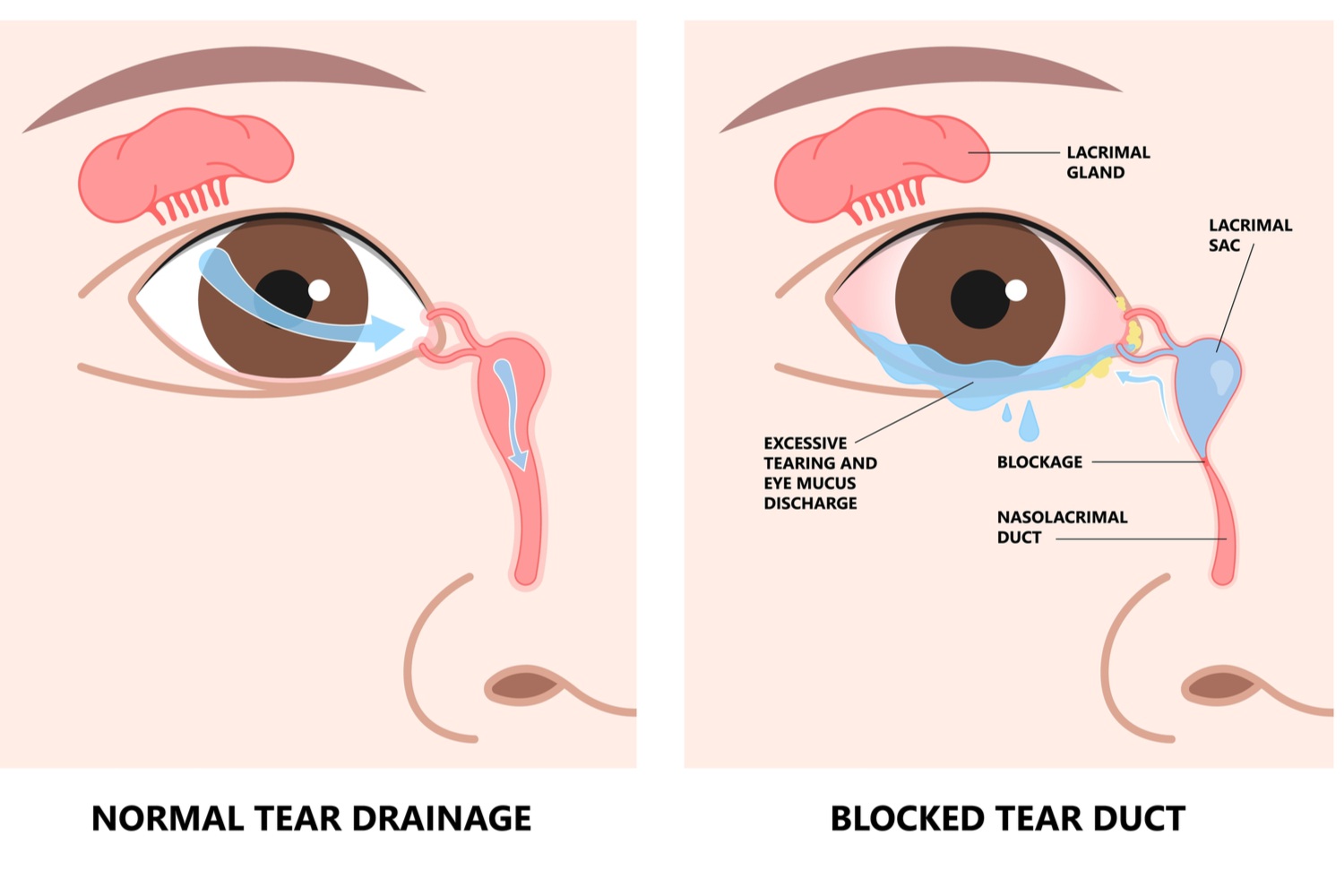
By using pulses of light, inflammation that is typically associated with dry eye disease is reduced, tear break-up time is improved, and meibomian gland functionality increases.
This application can significantly relieve dry eye and MGD symptoms.
Other Procedures
There are a variety of treatments available to relieve symptoms of dry eye and MGD, so it’s best to discuss your specific symptoms and needs with your optometrist.
Some other recommended treatments include:
- Lid debridement
- LipiFlow
- Scleral lenses
- Punctal plugs
When to See Your Optometrist
If you experience major dry eye symptoms that impact your ability to perform daily tasks, it’s time to see your optometrist.
MGD and dry eye shouldn’t dictate your life. Contact our team to book an appointment and find relief sooner.
Meibomian Gland Dysfunction (MGD): Symptoms, Causes, & Treatment
Written by Julie Canter
- What Happens
- Causes
- Symptoms
- Complications
- Diagnosis
- At Home
- Medical Treatment
- More
Meibomian gland dysfunction (MGD) is a common eye condition, yet many people don’t realize they have it.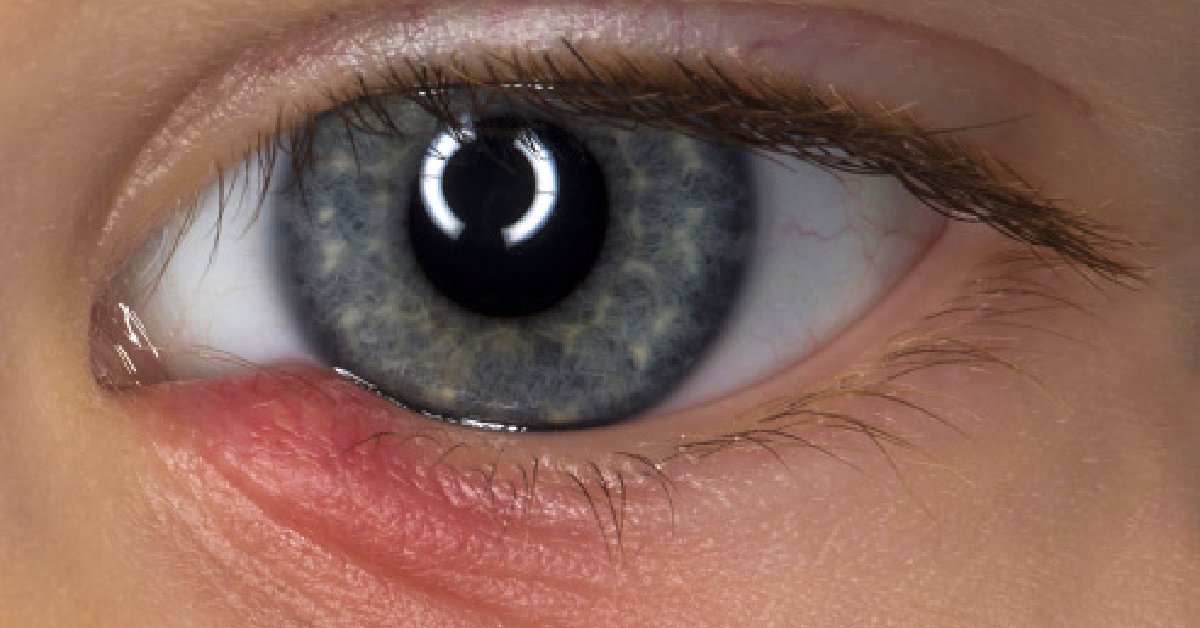 You get it when there’s a problem with a few dozen tiny glands in your eyelids that help make the oil layer of your tears.
You get it when there’s a problem with a few dozen tiny glands in your eyelids that help make the oil layer of your tears.
These meibomian glands, named after the German doctor who studied them, make an oil called meibum. Meibum, water, and mucus form the three layers of tear film, the fluid that keeps your eyes moist. The oil helps prevent the water layer on the eye surface from evaporating or drying out too quickly.
Changes to the amount or quality of the oil, or to the glands themselves, can lead to MGD. It’s often the result of a combination of things. The most common type, obstructive MGD, happens when the gland openings get clogged, and less and less oil reaches the eye surface.
Your doctor will tailor treatment based on the stage of your MGD as well as any underlying medical condition you have.
Age plays a part; the number of meibomian glands goes down over time. So does your ethnicity; Asian people are about three times more likely to get MGD than people with a European ancestry.
Wearing contact lenses makes you more likely to get it.
Common medical issues linked to MGD are:
- High cholesterol and triglycerides
- Allergic conjunctivitis and other eye diseases
- Inflamed or damaged eyelid or cornea
- Bacterial infection
- Autoimmune diseases like rosacea, lupus, rheumatoid arthritis, and Sjögren’s syndrome
Some medications can cause problems with oil production, including:
- Estrogen replacement therapy
- Drugs that reduce androgen
- Retinoids, from acne medication to anti-aging creams
In its early stage, you might not have any.
But as MGD progresses and you have less oil or poor-quality oil in your tear film, your eyes may burn, itch, or be irritated or dry. It might feel like you have a grain of sand or dust in your eye. An irritated, inflamed eyelid may be red.
The inner rim of your eyelid looking uneven or rough is a classic sign of MGD, but not everyone has it.
Some people have moments of blurred vision that improves when they blink.
Symptoms can get worse when you’re on the computer for a long time or if the air in your home or office is very dry, either from air conditioning or heating.
MGD is the most common cause of dry eye syndrome (also called dry eye disease). MGD may lead to eyelid inflammation, called blepharitis, especially along the rims.
There’s a lot of overlap among these three conditions, and it’s possible to have them all at once. In fact, experts aren’t entirely sure what comes first, or exactly how they’re connected. It could be that MGD causes inflammation that leads to dry eye, or that inflammation from dry eye could hurt the meibomian glands.
If you’re having eye surgery, untreated MGD raises the chance of getting an infection and inflammation afterward.
In its advanced stage, MGD may lead to cornea disease.
There’s no single thing that can show that you have MGD.
Your eye doctor will look closely at your eyelids to inspect the gland openings. They may press on your eyelids to squeeze oil out.
They may press on your eyelids to squeeze oil out.
The Schirmer’s test checks if you make enough tears. Other tests can measure the quality of your meibum and how fast your tears evaporate.
The combination of results can lead to a diagnosis of MGD.
Early on, self-care might be all you need.
Put a warm, wet washcloth or heat pack over your eyelids for 5 minutes, twice a day, to help loosen the oil. Follow this with a light fingertip massage. For the upper lid, look down and very gently roll one side of your index finger from the top of your eyelid down to the lash line. For the lower lid, look up at the ceiling and roll your finger up to the lash line.
To help unblock gland openings, clean with a non-soap cleanser once a day. Dab it on a warm, wet washcloth and gently go along your upper and lower lash lines.
Use a humidifier to counter the drying effects of air conditioning and indoor heating.
If you wear contacts, daily disposable lenses that are the “water gradient” type may be more comfortable.
Avoid your eye area completely when you use beauty products with retinoids.
Check with your doctor about taking omega-3 fatty acid supplements. They have anti-inflammatory properties and may boost the quality of your meibum.
For more advanced MGD and depending on what other health issues you have, your doctor may add medications to your care plan:
- Lubricants
- Antibiotics for infections
- Cyclosporine to suppress your immune system
- Steroids that help ease inflammation
These could be eye drops or spray, creams, or pills.
In the office, your doctor may use devices that send heat or pulsed light to open blocked meibomian glands and improve symptoms.
It’s important to stick with your treatment, especially home care, to reverse MGD or keep it from getting worse.
Top Picks
Dacryocystitis in newborns – treatment of obstruction and washing of the lacrimal canal in newborns and infants in Samara in the Samara Ophthalmological Clinic
Dacryocystitis of newborns is an inflammatory disease that develops due to impaired patency of the nasolacrimal canal. The tear ducts connect the inner corners of the eyelids to the nasal cavity. Normally, they should carry out the outflow of tears. With obstruction of the lacrimal ducts, fluid stagnates in the eyes, which leads to the occurrence of infectious processes and inflammation. One of the effective ways to treat dacryocystitis in newborns is to wash the lacrimal canal in children.
The tear ducts connect the inner corners of the eyelids to the nasal cavity. Normally, they should carry out the outflow of tears. With obstruction of the lacrimal ducts, fluid stagnates in the eyes, which leads to the occurrence of infectious processes and inflammation. One of the effective ways to treat dacryocystitis in newborns is to wash the lacrimal canal in children.
Etiology of neonatal dacryocystitis
At the stage of embryonic development, the lumen of the nasolacrimal ducts is filled with a gelatinous plug, and the outlet is closed with a membrane. In the last weeks of a woman’s pregnancy, the gelatinous mucus in the fetus dissolves, and at the first cry of the newborn, the closing membrane breaks, and the nasolacrimal ducts begin to function normally. But in some babies, there is a violation of the patency of the lacrimal canals. In ophthalmology, the following causes of this pathological condition are distinguished:
- congenital anomalies or damage to the lacrimal ducts due to injuries and surgical interventions, as a result of which it becomes impossible to drain the secretion of the lacrimal glands into the nasal cavity;
- non-resorbable gelatinous plug in neonates;
- preserved membranous septum at the exit of one or both lacrimal canals.

Dacryocystitis of newborns is quite rare – an average of 7% of infants, of which only 10% have bilateral pathology.
Symptoms of obstruction of the nasolacrimal duct in a newborn
The disease can occur in acute or chronic form. The main manifestations of the disease are lacrimation, as well as purulent or mucous discharge from the eye of a newborn. As a rule, parents can notice them on the 8-10th day of the baby’s life. The pus and mucus usually cause the eyelashes to stick together and become crusty. A feature that distinguishes dacryocystitis of newborns from inflammation of the conjunctival membrane (conjunctivitis) is swelling in the lower eyelid, when pressed, pus is released from the lacrimal punctum of the affected eye.
In the acute course of the disease, the clinical picture is more pronounced:
- Profuse discharge of tears and pus.
- Redness and swelling extends not only to the lower, but also to the upper eyelid, the palpebral fissure narrows.

- When pressure is applied to the swelling in the corner of the eye, pus appears, pain sensations appear, to which the child reacts with a sharp cry.
- Often associated with fever.
Without a timely visit to a doctor, an abscess is formed in the area of the inflamed lacrimal sac, which can open spontaneously. In severe cases, a fistula is formed, from which pus comes out from time to time. When the infection spreads to the surrounding soft tissues, phlegmon can form – an acute purulent inflammation, the consequences of which pose a serious danger not only to health, but also to the life of the child. There is a high risk of blood poisoning, the spread of the inflammatory process to the cornea, ear, maxillary sinuses, and the lining of the brain.
Diagnosis of dacryocystitis
In some infants, the disease is due to the presence of a gelatinous mass in the lacrimal canaliculus. In most of these cases, the cork resolves on its own, and recovery occurs after 4-6 days. However, if after this period the symptoms do not go away, or there is an acute course, repeated cases of the disease, then the mother should immediately take a referral to an ophthalmologist for diagnosis. It is carried out using the following methods:
However, if after this period the symptoms do not go away, or there is an acute course, repeated cases of the disease, then the mother should immediately take a referral to an ophthalmologist for diagnosis. It is carried out using the following methods:
- West’s test, which consists in instillation of the eye with a solution of collargol, followed by control of its appearance in the nasal passage with a cotton swab.
- Passive tear-nasal test or lacrimal duct lavage in children.
- Diagnostic probing of the nasolacrimal canaliculus.
- Bacteriological analysis of discharge from the eye to determine the type of pathogenic microorganisms in order to select effective antibiotics for therapy.
- If necessary, hardware research methods can also be used – ultrasound, MRI.
The Samara Ophthalmological Clinic employs the best pediatric ophthalmologists who have completed training in leading medical centers in Moscow. We use modern diagnostic tools that allow us to establish the cause of neonatal dacryocystitis and achieve high treatment efficiency.
Treatment of neonatal dacryocystitis
Treatment depends on the diagnosis, which can be both conservative and surgical. Drug therapy is aimed at cleaning the lacrimal canal from infection and relieving inflammation. As the main medicines, eye drops are used – antiseptics (solutions of collargol, furacilin), as well as substances with an antibacterial effect (Tobrex, Vitabact, etc.). Eye instillation is combined with light movements of a special massage, which makes it possible to eliminate blockage of the nasolacrimal ducts. From home remedies, you can use washing the nasal passages with a decoction of chamomile.
Conservative methods also include probing and washing the lacrimal canal in children – procedures to restore the patency of a clogged duct with a probe. If conservative treatment does not work, then dacryocystorhinostomy is used – the formation of a new nasolacrimal canal using endoscopic surgery. The best prevention of severe complications of dacryocystitis is a timely visit to a doctor and a course of treatment.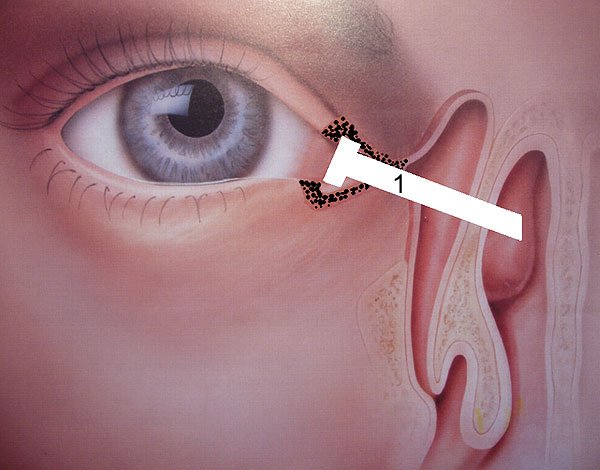
Author: Moiseeva Natalya Viktorovna, ophthalmologist
how to determine the cause and troubleshoot
The oil pressure lamp in a VAZ 2110 car serves as a kind of indicator that warns the driver about problems in the engine unit. Moreover, the lamp can light up both during movement and immediately after ignition – at idle. Just like that – by eye – it will not work to identify the cause of engine problems, so you will first need to open the hood.
Why can the oil pressure lamp in the VAZ 2110 light up?
The list of all probable reasons for the appearance of a bright oil can icon is quite extensive. It is quite possible that there was some problem in the engine itself, or the engine was repaired in bad faith, or the oil change procedure was performed poorly, etc.
No matter what reason caused the indicator to appear on the auto panel lack of oil in the engine, you need to immediately solve this problem. The first step is to find out the origins of this problem:
due to defective and careless maintenance of the VAZ-2110 car, the oil channels are clogged, for this reason the pump cannot provide the necessary oil pressure;
oil sensor failed;
short circuit in the wires of the oil sensor;
malfunction occurred in the oil pump itself;
oil filter clogged with debris and deposits;
The most common cause is low engine oil.

Video: why can the oiler icon blink?
What needs to be done?
First of all, as soon as the driver sees the signals of the oil pressure lamp, it is necessary to stop (if the indicator worked while the car was moving).
To troubleshoot, in some cases, the help of a workshop specialist may be required. However, some actions are quite accessible to every driver:
Check the engine oil level – if it is less than the Min mark, then add fluid. It is not necessary to add oil to the Max mark, a level between Min and Max will be quite sufficient.
If after this the oil pressure lamp does not go out, it is worth considering the quality of the oil and filter used. It is possible that you have not replaced either one or the other for a long time.
Along with the oil, the filter must also be changed.

Also, one of the most likely reasons for the appearance of the oil can icon on the panel can be considered the presence of dirt and deposits on the engine pan. You will need to clean the pan – it is quite possible that the indicator will disappear.
In cases where the cause of the oil pressure lamp lighting up is more serious reasons – for example, a short circuit or defects in the oil pump, specialist assistance will be required.
Why is the oil pressure lamp on at idle when the VAZ-2110 engine is warm?
One of the most common problems with the oil level in the engine today can be considered a malfunction of the oil pressure sensor. Its incorrect operation can be detected independently: in the case when the oil pressure lamp lights up when the engine is warm at idle. The driver can lightly press the gas pedal – the indicator will go out, but after releasing the pedal it will light up again.
In this case, the driver must immediately make sure that the cause of the malfunction lies precisely in the pressure sensor. If you carry out diagnostics, you can make sure that only the sensor is junk, when the engine itself is normal.
If you carry out diagnostics, you can make sure that only the sensor is junk, when the engine itself is normal.
Incorrect operation of the DDM can cause the indicator to appear on the instrument panel in the cabin
How to independently check the oil pressure sensor in the VAZ-2110?
The verification procedure is available to every car owner – just follow the following diagnostic procedure:
The first step is to check the wires that go from the oil pressure sensor to the control lamp (that is, the indicator itself).
You will need to take the sensor wire and lean it against the engine.
If the lamp on the panel in the form of an oil can immediately goes out, then there is no short circuit in the wiring.
The sensor needs to be removed. In the event that it is wet with oil, it means that the device is out of order and sends incorrect information to the instrument panel.
The oil pressure sensor will need to be replaced.

In the same case, if the device is dry, we can say that it is in working order. Accordingly, it is necessary to change the oil and oil filter.
Where is the oil pressure sensor in the VAZ-2110 and how to change it?
The device itself is located on the top of the camshaft.
Oil pressure sensor operating position – on the engine camshaft cover
It is easy to find and replace without the help of specialists. The sensor is replaced in the following order:
It is necessary to disconnect the wire from the sensor.
After that, with the key to 21, you will need to unscrew the sensor itself and pull it out.
Important! The sensor must be pulled out together with the O-ring!
A new device with a new ring must be inserted into the empty space.
Check contacts and wire integrity.
Connect the wire coming from the test lamp.


